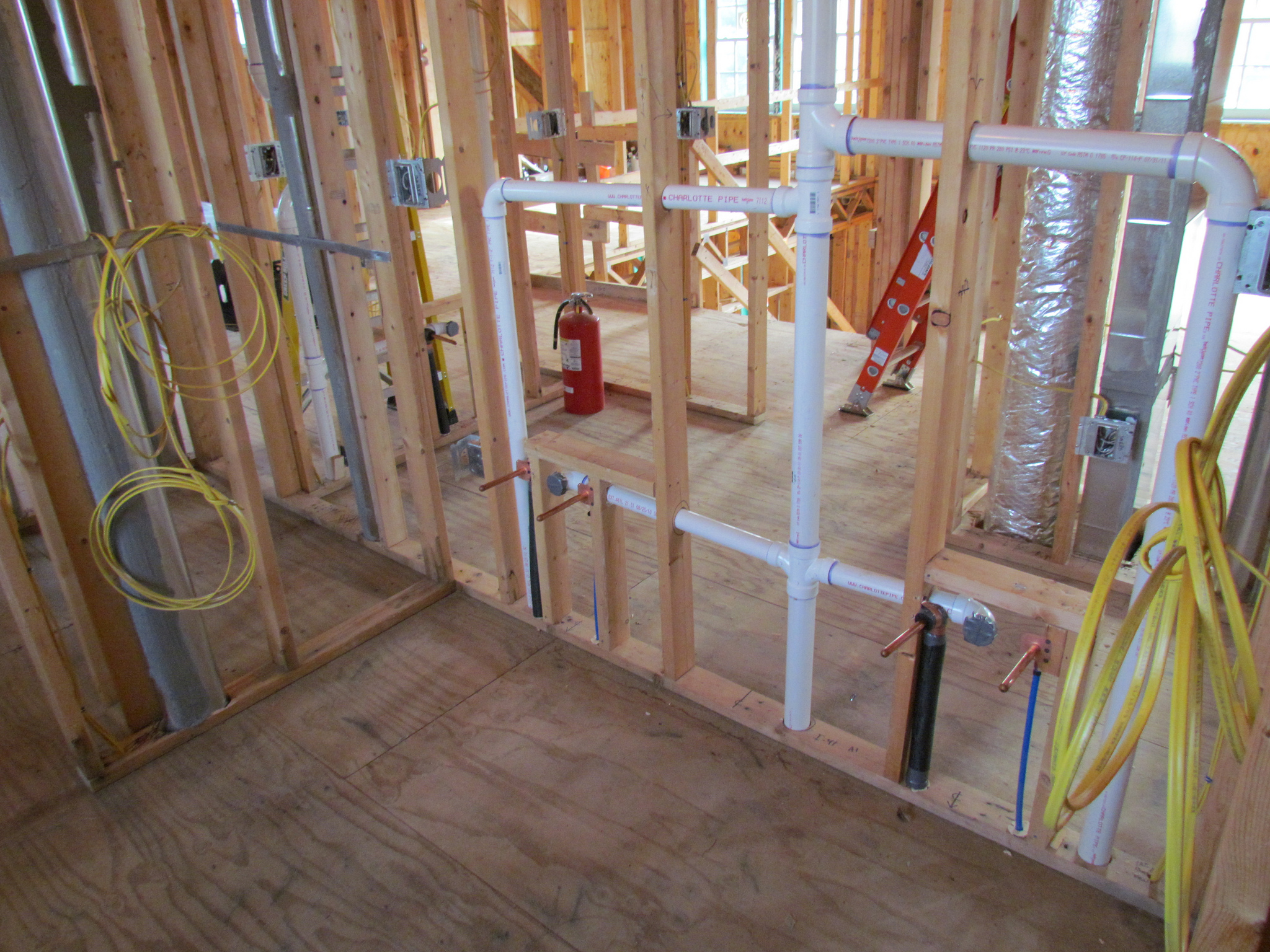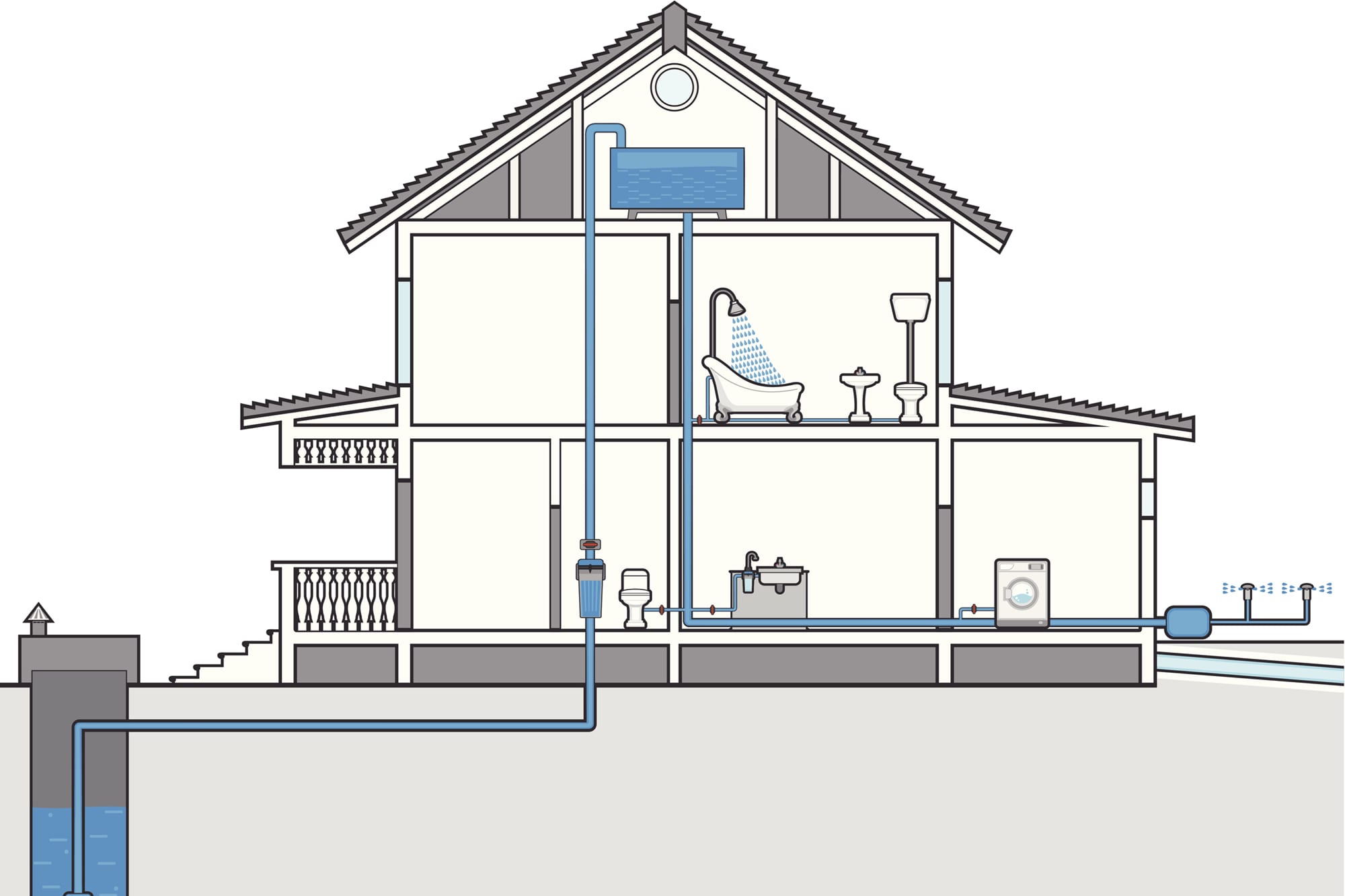The Complete Look at Your Home's Plumbing System Anatomy
The Complete Look at Your Home's Plumbing System Anatomy
Blog Article
Nearly everybody has got his or her own views when it comes to Anatomy of a House: Understanding the Components.

Comprehending exactly how your home's plumbing system functions is necessary for each home owner. From supplying tidy water for alcohol consumption, cooking, and bathing to securely removing wastewater, a properly maintained plumbing system is important for your household's wellness and convenience. In this comprehensive guide, we'll check out the complex network that composes your home's plumbing and offer pointers on maintenance, upgrades, and dealing with usual problems.
Introduction
Your home's pipes system is more than simply a network of pipes; it's an intricate system that ensures you have access to clean water and efficient wastewater elimination. Understanding its elements and how they interact can aid you stop costly repairs and ensure everything runs efficiently.
Basic Components of a Plumbing System
Pipelines and Tubes
At the heart of your pipes system are the pipelines and tubing that lug water throughout your home. These can be made from different materials such as copper, PVC, or PEX, each with its benefits in regards to durability and cost-effectiveness.
Components: Sinks, Toilets, Showers, and so on.
Fixtures like sinks, toilets, showers, and bath tubs are where water is used in your home. Recognizing exactly how these components connect to the pipes system assists in diagnosing issues and planning upgrades.
Shutoffs and Shut-off Points
Valves manage the flow of water in your plumbing system. Shut-off shutoffs are crucial throughout emergency situations or when you need to make repair work, permitting you to isolate parts of the system without interrupting water flow to the whole house.
Water Supply System
Main Water Line
The main water line connects your home to the metropolitan water supply or a personal well. It's where water enters your home and is dispersed to numerous fixtures.
Water Meter and Pressure Regulatory Authority
The water meter steps your water usage, while a stress regulator makes sure that water moves at a secure pressure throughout your home's plumbing system, stopping damage to pipelines and fixtures.
Cold Water vs. Warm water Lines
Comprehending the difference between cold water lines, which supply water straight from the main, and warm water lines, which lug heated water from the water heater, helps in repairing and planning for upgrades.
Drain System
Drain Pipes Pipes and Traps
Drain pipes carry wastewater far from sinks, showers, and bathrooms to the sewer or sewage-disposal tank. Catches protect against sewage system gases from entering your home and also trap debris that can trigger blockages.
Ventilation Pipelines
Air flow pipelines enable air into the drainage system, protecting against suction that could slow drainage and create catches to vacant. Correct ventilation is crucial for keeping the honesty of your pipes system.
Relevance of Correct Drain
Ensuring proper water drainage prevents backups and water damages. On a regular basis cleansing drains and keeping traps can prevent costly repair services and extend the life of your pipes system.
Water Heating Unit
Types of Hot Water Heater
Water heaters can be tankless or conventional tank-style. Tankless heating units warmth water on demand, while storage tanks save heated water for immediate use.
How Water Heaters Attach to the Plumbing System
Understanding just how water heaters attach to both the cold water supply and hot water circulation lines helps in diagnosing concerns like insufficient warm water or leaks.
Upkeep Tips for Water Heaters
Regularly purging your water heater to eliminate debris, checking the temperature level settings, and evaluating for leakages can expand its life-span and enhance power effectiveness.
Common Pipes Concerns
Leaks and Their Reasons
Leakages can occur because of aging pipes, loosened installations, or high water stress. Resolving leakages quickly avoids water damage and mold growth.
Blockages and Clogs
Blockages in drains and bathrooms are usually triggered by purging non-flushable things or a build-up of grease and hair. Utilizing drainpipe screens and being mindful of what decreases your drains can stop obstructions.
Indications of Pipes Problems to Look For
Low tide stress, sluggish drains pipes, foul odors, or abnormally high water bills are signs of prospective plumbing troubles that should be addressed quickly.
Plumbing Maintenance Tips
Regular Evaluations and Checks
Arrange yearly pipes assessments to capture concerns early. Seek signs of leakages, corrosion, or mineral accumulation in faucets and showerheads.
Do It Yourself Maintenance Tasks
Straightforward tasks like cleaning tap aerators, checking for commode leakages utilizing dye tablets, or protecting exposed pipes in cool environments can avoid major plumbing issues.
When to Call a Professional Plumber
Know when a plumbing concern needs professional proficiency. Trying complicated repair work without proper expertise can bring about more damage and higher repair prices.
Upgrading Your Plumbing System
Factors for Updating
Updating to water-efficient fixtures or changing old pipelines can enhance water quality, lower water expenses, and raise the value of your home.
Modern Plumbing Technologies and Their Benefits
Discover modern technologies like wise leakage detectors, water-saving commodes, and energy-efficient water heaters that can conserve cash and minimize ecological influence.
Expense Considerations and ROI
Compute the in advance prices versus long-term financial savings when thinking about pipes upgrades. Several upgrades pay for themselves via decreased energy expenses and fewer fixings.
Environmental Effect and Preservation
Water-Saving Components and Devices
Setting up low-flow faucets, showerheads, and toilets can significantly reduce water use without compromising efficiency.
Tips for Minimizing Water Usage
Straightforward routines like dealing with leaks promptly, taking shorter showers, and running complete tons of washing and dishes can save water and reduced your utility bills.
Eco-Friendly Pipes Options
Consider sustainable plumbing products like bamboo for flooring, which is durable and green, or recycled glass for kitchen counters.
Emergency Readiness
Actions to Take During a Plumbing Emergency situation
Know where your shut-off valves are located and exactly how to turn off the supply of water in case of a burst pipeline or major leak.
Importance of Having Emergency Situation Calls Convenient
Maintain contact details for neighborhood plumbings or emergency situation services readily offered for quick feedback throughout a plumbing dilemma.
DIY Emergency Situation Fixes (When Appropriate).
Short-term fixes like utilizing duct tape to spot a leaking pipe or placing a bucket under a dripping tap can reduce damage up until a professional plumbing professional shows up.
Conclusion.
Comprehending the makeup of your home's pipes system empowers you to preserve it properly, conserving money and time on fixings. By following normal upkeep regimens and staying informed about modern plumbing technologies, you can ensure your pipes system operates efficiently for years ahead.
HOW YOUR PLUMBING SYSTEM WORKS
Which Pipes Do What?
Blue lines = fresh water supply entering the building
Red lines = hot water supply entering the building
Grey lines = pipes carrying waste away from the building and venting pipes carrying gases away from the building (through the roof)
YOUR MAIN PLUMBING SYSTEMS
There are two main plumbing systems that support your home s basic plumbing needs one that brings clean water into your home, and one that sends dirty water away from your home. Connected to the toilet, bath, shower, and other faucets in your home, these two systems keep your water flowing in the right directions.
ACCESSING FRESH WATER
Fresh and clean water is brought into your home through the main water supply line . Filtered through one pipe, this water is pressured to flow into the various fixtures in your home at any given time.
This water can be sourced from a well located on your property, a pond or river (mostly cottages), or, as in most cases, from the city s municipal water treatment centre. However, it is important to note that water that is untreated, such as the water siphoned from ponds or rivers, may not be safe to drink. Personal water supplies always need to be treated for hardness and contaminants before consumed.
MUNICIPAL WATER SUPPLIES
Improve taste and odour
Remove sediment
Eliminate hardness
Reduce chlorine
COLD WATER SUPPLY VS. HOT WATER SUPPLY
Cold water flows into your home or building through the service line, which then distributes hot or cold water to your fixtures. This line is most commonly run through a central column that runs floor to floor. Hot water runs in short and straight pipes as the longer the pipeline, the more heat that will be lost in the transfer. Having shorter pipes also allows residents to access hot water more quickly.
WASTE WATER SYSTEM
Your wastewater system is divided into two parts pipes that send wastewater away from your home and venting pipes that send sewer gas away from your home. Sewage water travels through pipes that flush the water and waste towards local sewers that are operated and managed by your city or town. Most sewer systems rely on gravity to move the wastewater to where it needs to go.
The further away from your toilet or sink, the larger wastewater pipes become. This allows for waste to be disposed of from various parts of your home or business at once without pipe blockages. The angle and flow of these pipes are also essential for keeping your waste pipes clear of build up.
https://harrisplumbing.ca/how-your-home-plumbing-system-works/

HOW YOUR PLUMBING SYSTEM WORKS
Which Pipes Do What?
YOUR MAIN PLUMBING SYSTEMS
There are two main plumbing systems that support your home s basic plumbing needs one that brings clean water into your home, and one that sends dirty water away from your home. Connected to the toilet, bath, shower, and other faucets in your home, these two systems keep your water flowing in the right directions.
ACCESSING FRESH WATER
Fresh and clean water is brought into your home through the main water supply line . Filtered through one pipe, this water is pressured to flow into the various fixtures in your home at any given time.
This water can be sourced from a well located on your property, a pond or river (mostly cottages), or, as in most cases, from the city s municipal water treatment centre. However, it is important to note that water that is untreated, such as the water siphoned from ponds or rivers, may not be safe to drink. Personal water supplies always need to be treated for hardness and contaminants before consumed.
MUNICIPAL WATER SUPPLIES
COLD WATER SUPPLY VS. HOT WATER SUPPLY
Cold water flows into your home or building through the service line, which then distributes hot or cold water to your fixtures. This line is most commonly run through a central column that runs floor to floor. Hot water runs in short and straight pipes as the longer the pipeline, the more heat that will be lost in the transfer. Having shorter pipes also allows residents to access hot water more quickly.
WASTE WATER SYSTEM
Your wastewater system is divided into two parts pipes that send wastewater away from your home and venting pipes that send sewer gas away from your home. Sewage water travels through pipes that flush the water and waste towards local sewers that are operated and managed by your city or town. Most sewer systems rely on gravity to move the wastewater to where it needs to go.
The further away from your toilet or sink, the larger wastewater pipes become. This allows for waste to be disposed of from various parts of your home or business at once without pipe blockages. The angle and flow of these pipes are also essential for keeping your waste pipes clear of build up.
https://harrisplumbing.ca/how-your-home-plumbing-system-works/
As a serious reader on Understanding Your Home's Plumbing Anatomy, I figured sharing that editorial was necessary. Kindly pause to promote this blog entry if you liked it. Thank you for going through it.
Call Today Report this page